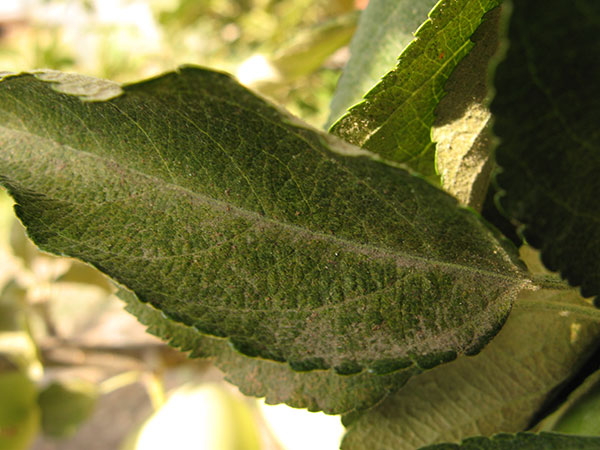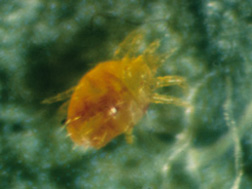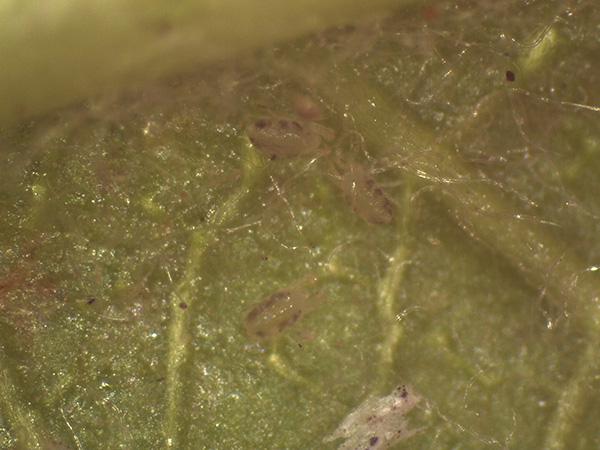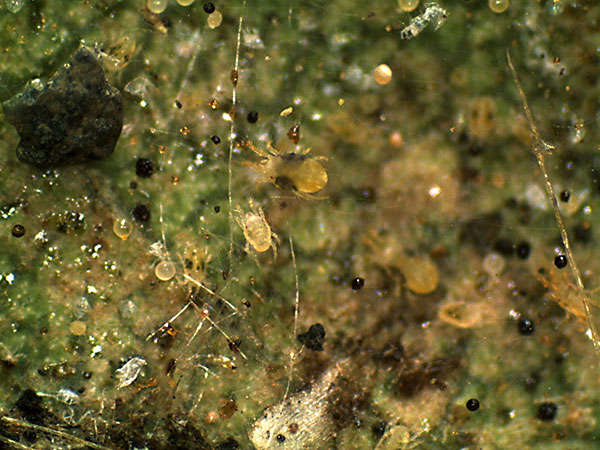Spider Mites on Fruit

Spider mite injury to pear can cause rapid and severe leaf burn.
 Spider mite injury to apple leaf. Note stippling and debris caught in webbing on the leaf.
Spider mite injury to apple leaf. Note stippling and debris caught in webbing on the leaf.

The western predatory mite is the most important predator in Utah orchards. It is teardrop-shaped and moves quickly.

Zetzellia mali is a secondary predator, mostly of European red mite and rust mites, but will also feed on spider mite eggs.
HOSTS
- Apple
- Apricot
- Cane and Bramble berries
- Cherry
- Peach/Nectarine
- Pear
- Plum
- Prune
- Strawberry
DESCRIPTION
Mites are small arthropods that are more closely related to spiders and ticks than to insects. Spider mites in this group are web spinners, hence the name “spider” mites. They are one of the most important and destructive group of pests to agricultural crops worldwide. However, the spider mite’s status as a pest is often created by poor pest management practices, such as broad spectrum pesticide applications and improper management of orchard ground covers. These practices shift the balance toward high spider mite densities and low natural enemy densities. During hot summer months, the spider mite’s high reproductive rate can cause population explosions in a very short period of time. In addition, its small size makes detection, identification, and monitoring particularly difficult.
BIOLOGY
Female adults are 1/60 inch long and oval, while males are slightly smaller with a pointed hind end. They overwinter as orange without spots, and turn from orange to green once feeding begins. Summer adults have two red eyes, two distinct dark spots on the back behind the eyes (twospotted spider mite) or multiple dark spots on the back (McDaniel spider mite), and are yellow to green, turning brown with age.
SYMPTOMS
- Reduced photosynthetic activity of trees
- White speckling or stippling on leaves
- Bronze or brown leaves that dry up and drop prematurely
- Russeting on the surface of pear fruits from mite feeding
- Scarring and shriveling of tart cherries from webbing and feeding
- Fine webbing on leaves and twigs
- Reduced tree vigor and fruit color, size, and production
- Stressed trees are more susceptible to winter injury and mortality
GENERAL MANAGEMENT
Relying primarily on biological and cultural control for spider mite management should be the goal of every orchard pest manager. In most situations, chemical control is not necessary and will often only make the mite problem worse. Use of miticides will eliminate the beneficial predatory mites, which are capable of keeping spider mite populations below economically damaging levels. Another reason to avoid chemical control is that populations of twospotted and McDaniel spider mites have developed resistance to miticides.
Mite Predators: The western predatory mite, Typhlodromus occidentalis, is common and the most important mite predator in Utah fruit orchards. Several other species of predatory phytoseiid mites do occur, but their role in biological control of spider mites is usually minimal. Zetzellia mali, a smaller yellow predatory mite, can often be found in unsprayed orchards or in those orchards that receive fewer insecticides. However, Z. mali predominantly attacks European red mite and apple rust mite. Other predators that feed on spider mites include a small black lady beetle, Stethorus picipes; some predatory bugs; thrips; and lacewings. But in Utah orchards, Typhlodromus occidentalis provides the most consistent and highest level of mite biological control.



